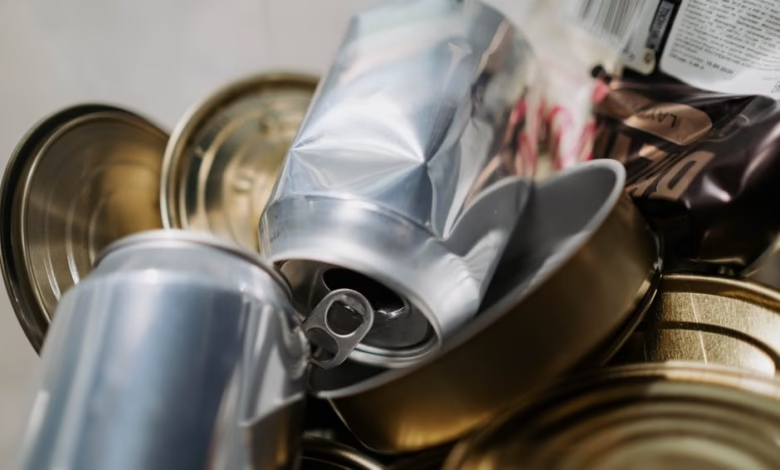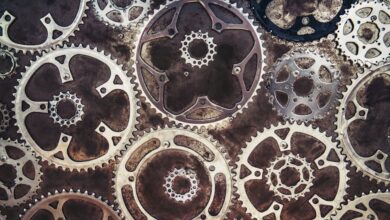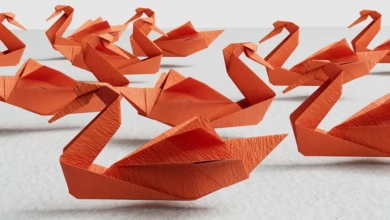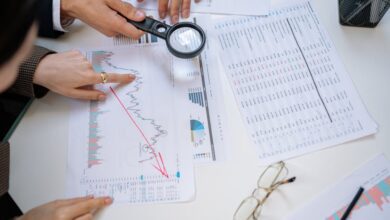Exploring Metal Recycling: Key Processes and Emerging Market Trends in Scrap Metal Industries

The world of metal recycling is undergoing a significant transformation, driven by the increasing demand for sustainable practices and innovative technologies. As industries strive for greater efficiency and environmental responsibility, understanding the processes behind metal recycling becomes crucial. This article delves into the intricacies of metal recycling, exploring both ferrous and non-ferrous metals and highlighting the essential role they play in various sectors, including construction, aerospace, and automotive industries.
Additionally, we will examine current market trends in precious and rare earth metals, focusing on opportunities for gold and silver investing amidst fluctuating prices in the metal commodities market. As the demand for metals like lithium, platinum, and palladium rises, investors are keenly interested in the potential returns these precious metals can offer.
Moreover, the future of sustainable metal production is bright, with advancements in metal fabrication and 3D printing technologies revolutionizing the way we think about metallurgy and metal alloys. This article will outline these innovations and their implications for industries reliant on energy metals and base metals. Join us as we navigate the evolving landscape of metal recycling, uncovering the trends and opportunities that lie ahead.
- 1. Understanding the Metal Recycling Process: From Ferrous to Non-Ferrous Metals
- 2. Market Trends in Precious and Rare Earth Metals: Opportunities for Gold and Silver Investing
- 3. The Future of Sustainable Metal Production: Innovations in Metal Fabrication and 3D Printing Technologies
1. Understanding the Metal Recycling Process: From Ferrous to Non-Ferrous Metals
Metal recycling is a critical process that helps conserve resources and reduce the environmental impact of metal mining. Understanding the metal recycling process begins with the distinction between ferrous and non-ferrous metals. Ferrous metals, primarily composed of iron, are commonly found in construction metals, automotive metals, and industrial metals. Examples include steel and cast iron, which are widely recycled due to their abundance and high demand in various industries.
In contrast, non-ferrous metals do not contain significant amounts of iron and include aluminum, copper, zinc, and precious metals like platinum and palladium. These metals are often more valuable and are essential in several applications, including jewelry and electronics. Non-ferrous metals also encompass energy metals, such as lithium, which are crucial for battery production and the growing electric vehicle market.
The metal recycling process begins with the collection and sorting of scrap metals. This involves the use of advanced metallurgy techniques to separate ferrous from non-ferrous materials. Once sorted, the metals are cleaned and prepared for melting. During the melting phase, scrap metals are transformed into molten metal, which can then be cast into new shapes or forms, including metal alloys that combine various elements to enhance properties for specific applications, such as aerospace and automotive industries.
Recycling metals not only conserves natural resources but also reduces energy consumption compared to metal mining. For instance, recycling aluminum saves about 90% of the energy required to produce new aluminum from raw materials. This contributes to sustainable metal production, aligning with current metal trends that emphasize eco-friendly practices.
As the demand for metal commodities continues to rise, driven by sectors like construction and manufacturing, the focus on efficient metal recycling processes becomes increasingly important. Innovations such as 3D printing metals and advancements in recycling technologies are reshaping the landscape of metal fabrication, providing new avenues for utilizing recycled materials. This is particularly relevant for rare earth metals, which are essential in high-tech applications and are often challenging to source due to their scarcity.
In conclusion, understanding the distinction between ferrous and non-ferrous metals is crucial in the metal recycling process. With the ongoing growth in gold investing and silver investing, as well as the rising interest in sustainable practices, the metal recycling industry plays a vital role in meeting the global demand while supporting environmental protection efforts.
2. Market Trends in Precious and Rare Earth Metals: Opportunities for Gold and Silver Investing
The market for precious and rare earth metals has become increasingly dynamic, presenting unique opportunities for investors interested in gold and silver. As the demand for these metals continues to rise, driven by their applications in various industries, understanding current trends is crucial for making informed investment decisions.
One of the most significant trends is the growing interest in sustainable metal production. As industries shift towards environmentally friendly practices, the recycling of precious metals is gaining traction. Metal recycling not only reduces waste but also lowers the need for metal mining, which can be environmentally damaging. This shift supports the increasing demand for recycled gold and silver, particularly in the jewelry and electronics sectors, where these metals are often utilized.
Additionally, the rise of advanced technologies, such as 3D printing metals, is transforming the landscape for precious and industrial metals. This innovation enables manufacturers to create complex designs with minimal waste, thereby increasing the efficiency of metal fabrication. As industries such as aerospace, automotive, and construction increasingly adopt these technologies, the demand for precious and rare earth metals will likely surge.
Moreover, the growing focus on electric vehicles (EVs) and renewable energy solutions is driving up the demand for battery metals, including lithium and cobalt, alongside traditional precious metals like gold and silver. Investors are recognizing the value of these metals as essential components in energy storage systems and electric vehicle batteries.
Furthermore, the current geopolitical landscape has led to supply chain disruptions, impacting the availability of key metals. As a result, investors are looking towards precious and rare earth metals as a hedge against market volatility. Gold and silver investing, in particular, is seen as a safe haven during times of economic uncertainty.
In conclusion, the market trends in precious and rare earth metals present lucrative opportunities for investors. With the increasing focus on sustainable practices, advancements in technology, and the need for resilient supply chains, gold and silver remain attractive investment options. Staying abreast of these trends can empower investors to make strategic decisions in the evolving landscape of metal commodities.
3. The Future of Sustainable Metal Production: Innovations in Metal Fabrication and 3D Printing Technologies
The future of sustainable metal production is poised for significant transformation, driven by innovations in metal fabrication and 3D printing technologies. As the demand for both industrial and precious metals continues to rise, the metal recycling industry is embracing these advancements to enhance efficiency and reduce environmental impact.
One of the most notable trends is the integration of 3D printing metals, which allows for the creation of complex metal parts with minimal waste. This technology not only reduces the need for traditional metal mining but also promotes the use of recycled materials. Industries such as aerospace, automotive, and construction are increasingly turning to 3D printing to produce lightweight and durable components from ferrous and non-ferrous metals, including aluminum, steel, and copper.
Moreover, the rise of metal alloys that incorporate rare earth metals and refractory metals is enhancing the performance of products while simultaneously supporting sustainable practices. For example, the development of battery metals like lithium and zinc has revolutionized energy storage solutions, while advancements in metallurgy are improving the resistance of metals to corrosion, thereby extending their lifecycle.
In addition to these innovations, the market trends indicate a growing interest in gold investing and silver investing, as investors seek to hedge against economic uncertainty. This trend is further supported by the increasing demand for jewelry metals and metal commodities that are sustainably sourced.
As the metal recycling sector continues to evolve, it is essential to utilize techniques that not only focus on the extraction and recycling of base metals but also prioritize the sustainable production of new materials. By adopting cutting-edge metal fabrication methods and embracing the potential of 3D printing metals, industries can significantly reduce their carbon footprint and promote a circular economy. The future of sustainable metal production is bright, and with continued innovations, we can expect a more environmentally friendly approach to metal usage across various sectors.
References:
– Metals Industry Trends. (2023). Retrieved from [source link]
– Innovations in 3D Metal Printing. (2023). Retrieved from [source link]
– Sustainable Practices in Metal Fabrication. (2023). Retrieved from [source link]
In conclusion, the landscape of metal recycling is evolving rapidly, driven by both technological advancements and market demands. Understanding the metal recycling process, from the intricate handling of ferrous and non-ferrous metals to the complexities surrounding precious and rare earth metals, is crucial for stakeholders in various industries. As we noted, opportunities for gold investing and silver investing are becoming increasingly attractive, particularly in light of market trends that prioritize sustainability and innovation in metal production.
The future of sustainable metal production is bright, fueled by groundbreaking innovations in metal fabrication and 3D printing technologies. These advancements not only enhance the efficiency of recycling processes but also reduce the reliance on traditional metal mining, leading to a significant decrease in metal corrosion and the environmental impact associated with extracting base metals like steel, aluminum, copper, and zinc.
As we embrace these changes, it’s evident that industries ranging from construction to aerospace will benefit from the integration of recycled materials, including jewelry metals and energy metals, into their supply chains. As we look ahead, staying informed about metal trends and the evolving market for metal commodities, including refractory and battery metals, will be essential for investors and manufacturers alike. The journey towards a more sustainable and efficient future in metallurgy is underway, and engaging with these developments will be key to capitalizing on the opportunities that lie ahead.
References:
(Include your references here)





